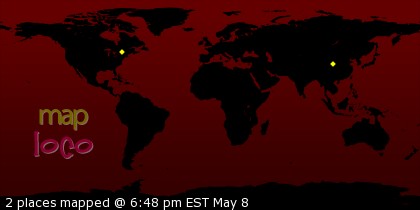Today was the first day of my week-long class “More Than the
Zombie Apocalypse: Writing SF/F” for teens at the Loft as part of their Youth
Summer program.
1.
A science
fiction story’s plot turns on a science concept (math, physics, biology, etc.)
and a fantasy story’s plot turns of magic or myth. This is the definition that I usually prefer
for myself. Of course, by this
definition my novel Archangel Protocol which says “science fiction” right there
on the spine is actually fantasy. No
science turns the plot; angels do. Thus:
fantasy. However, this is often a pretty
good rule of thumb. This also
encompasses one of the student’s idea that it’s fantasy if there’s magic in it,
and science fiction if there’s technology and/or tech that could be mistaken as
magic (Clarke’s Third Law) in it.
2. It’s science fiction (or fantasy) if it
FEELS like it. That’s to say, that sometimes it’s utterly subjective. If a story’s background takes place in the
future, it’s science fiction, because even if the future has elves, somehow the
addition of ray guns and space ships automatically means SF.
3. It’s science fiction (or fantasy) because a
science fiction author wrote it.
Sometimes you come across stories in SF/F magazines that seem like
neither SF or F, they might be there because someone who wrote it is known to
the SF/F community. Another interesting side note about this is that some
subgenres tend to get placed in on one side of the dividing line or the other
because of where they came out of. Our
example: steampunk. It came out of an SF
tradition, therefore it’s SF.
4. It’s fantasy (or science fiction) because
that’s what it says on the book spine.
We didn’t entirely cover this directly, but, in passing, I mentioned
that none of this really matters except when you want to find a publisher. It’s
helpful to be able to tell an agent or an editor, I wrote x (and fill-in what
genre/subgenre you wrote.) It’s also
helpful when you want to find more books like the ones you enjoy as a reader
(which is why it’s important to the publisher). We never talked about this last part
officially, but we did have a side conversation about what kind of books we
looked for, ie hard versus soft SF.
I took a few questions from the students when we seemed to
run out of steam. There was an
interesting one about how do you merge two divergent characters into a single
storyline. I didn’t have a good answer
for that per se, but I used the question to talk about when you start a story
(just before everything changes) and some of my theories about how a novel and
a short story should be structured in terms of increasing external pressure and
mounting personal/emotional stakes.
That led a discussion about books that failed to start just
before everything changes but were still popular, most notably Harry Potter and
the Sorcerer’s/Philosopher’s Stone.
I ultimately said that my answer to writing two divergent
storylines coming together was that you needed to do it carefully and to show
similar progression in the emotional arcs or the external pressure arcs of the separate
characters.
Another student wanted to know how to write a dystopia
masquerading as a utopia, which sounded marvelous to me. I brought up Mussolini, and suggested that
one way was to show trains running on time.
The idea being that if a dystopia has the feeling of clean efficiency it’s
easy to mistake it for a utopia. I reminded the student that he needed to be
sure to have his p.o.v. character be observant enough to give the reader clues
that ‘something’s NOT right,’ even if it’s something like a noticeable military
presence coupled with a sense of unease—someone else threw out the idea that a
big brother mindset could work. The idea
there being that if you show faulty logic as part of the world-building (if you
do it in a way that’s not so clumsy people think you’ve made the mistake), you
can imply a grim underbelly. I feel, however, we could have done a whole hour and a half class on that question.
I have no idea if my disorganized, jumbled teaching style
will work for any of these students, but I have hope. I was impressed by how many of them are
actively engaged in writing short stories or novels. In an adult class of the same size, it’s not
uncommon to only have half the people actively writing something. In this class, it was 90%. That makes thing easier for me, because often
that mean that people have, as shown above, very specific needs that can be met
and questions that can be answered.
But, despite all that, I managed to have volunteers for critique. They have to have (no more than, but anything
up to) 10 pages of something ready to hand out tomorrow. I got six people ready to go. If even half of them follow-through, that’s a
great start.





1 comment:
Like.
Post a Comment